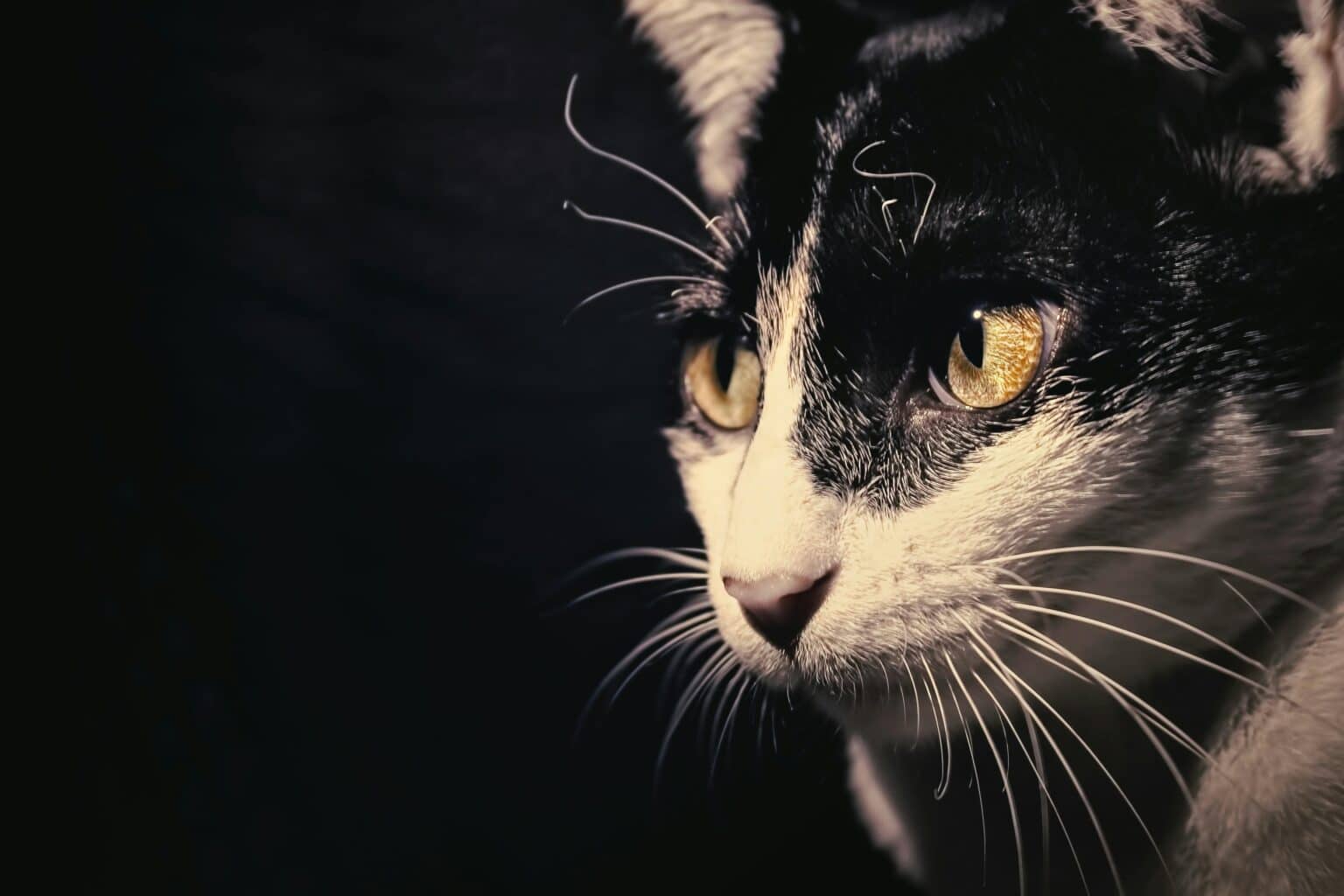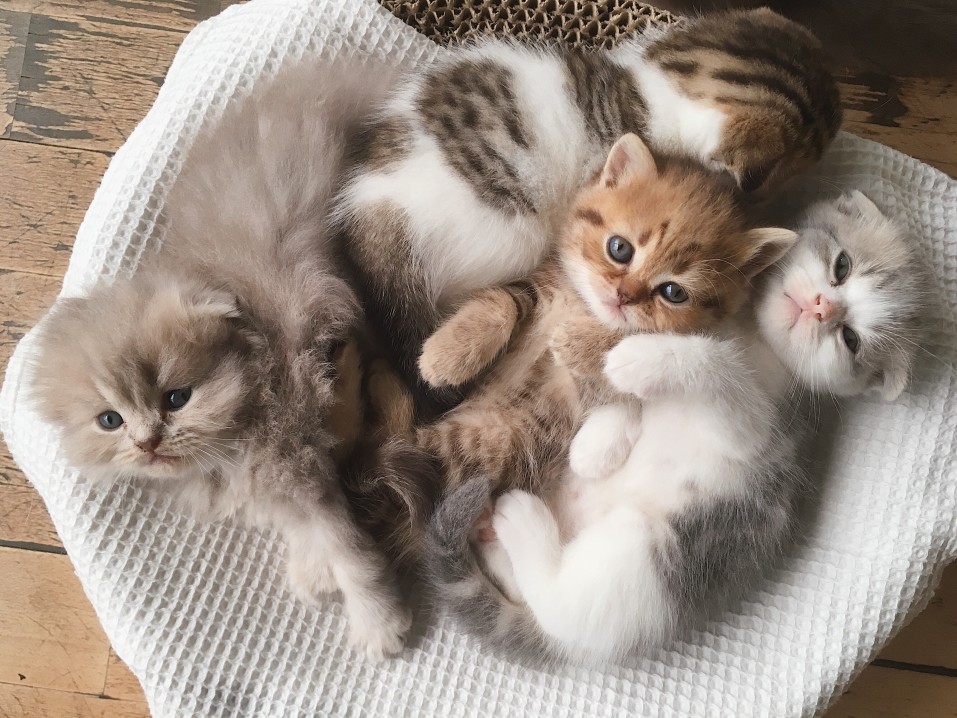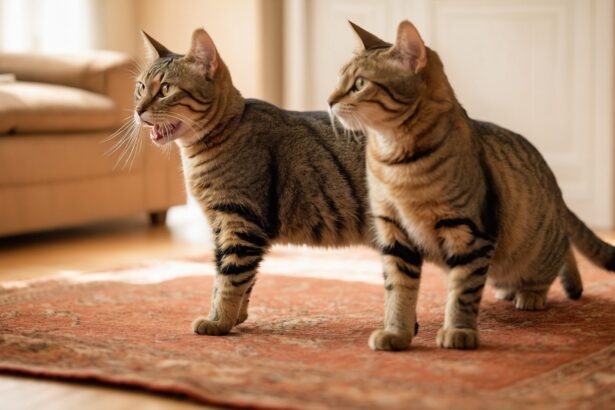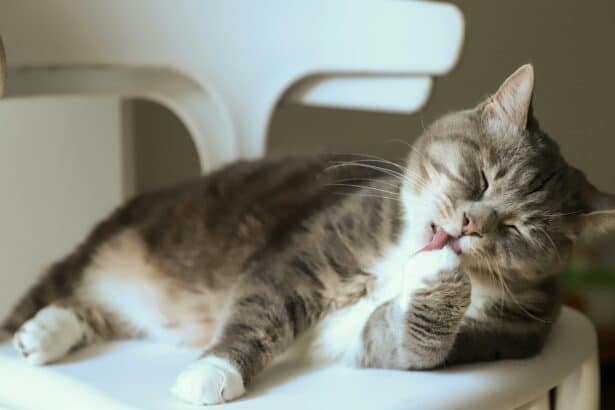How do cats see the world?
Ever caught your cat staring into the distance with that mysterious, faraway look? It’s not drama—just a completely different visual world. If we swoon over sunsets, our whiskered friends decode light, movement, and contrast first.
Ready to peek through those enchanting eyes? Let’s unravel how your cat actually sees color, owns the night, and spots a fluttering feather in a heartbeat.
Color vision in cats: not black and white at all
So, do cats see color?
Yes—just not like us. Cats are dichromats, which means they mainly pick up blues and greens. Reds and pinks tend to wash out into browns or grayish tones, and yellows can look muted.
That’s why a bright blue mouse or a teal wand toy usually beats a cherry-red ball. Your cat simply “reads” those cooler hues more clearly.
Which colors stand out for cats?
Think cool palette: sky blue, turquoise, teal, and some greens. These shades pop against most home surfaces, especially when the light is soft. Purples can sometimes register closer to blue, which is why purple toys may still get attention.
Pro tip: For high-contrast play, try a blue wand toy on a cream rug at dusk—the combo is a visual sweet spot for most cats.
Curious to go deeper into how felines process the world? Enjoy this friendly guide to feline perception packed with visuals and examples.
Night vision superpowers (and their limits)
Why cats shine in low light
Three little marvels make your cat a dusk-and-dawn pro. First, vertical slit pupils open and close dramatically to control light. Second, the retina is packed with rods (great for dim light and motion). Third, a reflective layer called the tapetum lucidum “recycles” light, giving you that dreamy glow in photos.
Put simply: your cat needs much less light than you do to see shapes and movement—perfect for sneaking past the snack cupboard at 4 a.m.
Can cats see in pitch darkness?
No, not in total darkness. They still need at least a tiny bit of light. When it’s truly black, they rely more on whiskers, hearing, and memory to map the room.
Mistake to avoid: Don’t assume your cat can navigate a cluttered hallway at night. A dim nightlight near food, water, or the litter box prevents bumps and stress—especially for seniors.
If your little shadow also loves nighttime cuddles, here’s why some cats choose to sleep with us (and what they’re really telling you).
Sharpness and distance: clear up close, sketchy far away
Is your cat a tiny bit near-sighted?
Pretty much. Cats see best at short to medium distances. Far-away details blur, which is why your kitty may squint at a person across the room but laser-lock on a wiggling shoelace.
Want her attention? Move closer, make the object move, or use a color she sees well. It’s not sass—it’s optics.
Why doesn’t my cat follow my finger?
Two reasons. Cats favor movement over static pointing, and their wide field of view (around 200°) is built to scan, not to fixate on your fingertip. A still finger is easy to ignore; a twitching feather is irresistible.
Practical play tip: Place the toy low and move it in slow zigzags before making quick “prey” bursts. The slow start helps her lock on; the sudden dart satisfies the hunt.
Ever wondered why your cat tails you from room to room? The answer is sweet—and practical. Here’s why your cat follows you everywhere.
Movement: the magic your cat can’t resist
Built to detect the slightest flick
Cats are motion specialists. Their brains prioritize moving targets, and their eyes pick up quick flickers we might miss. That’s why a feather on a string or a twitching tail is endlessly fascinating—especially when it moves unpredictably like real prey.
Surprising fact: A cat’s pupils can change size dramatically depending on light and emotion, far more than ours—fantastic for hunting, hilarious for zoomies.
Turn that sensitivity into joyful play
- Use fishing-rod toys that “hide” behind furniture legs, pause, then dart—prey doesn’t move in straight lines.
- Mix tempos: slow wriggle, sudden sprint, freeze, and repeat. Variety keeps the brain—and body—engaged.
- Rotate toy colors and textures weekly so they feel “new.” Try blue/teal for easy visibility.
- End with a small treat or food puzzle. Finishing the “hunt” calms the nervous system and reduces post-play frustration.
Want an extra spark for playtime? Many cats respond adorably to the scent of catnip. Here’s a quick read on why cats love catnip and fun ways to use it.
Everyday care for happy eyes
Simple habits that help
- Keep paths clear to food, water, and litter—especially at night. A tiny nightlight works wonders.
- Offer high-contrast toys and play on surfaces where they “pop.” Blue toy, beige carpet? Chef’s kiss.
- Watch for changes: bumping into furniture, missing jumps, or reluctance to move in low light can signal vision issues.
Error to skip: Shining bright lights or laser pointers directly into your cat’s eyes. It’s uncomfortable and doesn’t add value to play. Aim the beam away and toward the floor.
For more cozy, practical reads, browse our handy guides for cat lovers and build a routine that feels good for both of you.
FAQ
What colors can cats actually see?
Mainly blues and greens, with reds appearing dull or grayish. High-contrast, cool-toned toys are easiest for most cats to notice.
Can cats see in complete darkness?
No. They excel in low light but still need some light to see. In true darkness, whiskers and memory take the lead.
Do cats recognize their owners by sight?
Partly, but they rely more on your silhouette, movement, voice, and scent. It’s a multi-sense love story.
Which toys are easiest for cats to track?
Moving toys in blue or teal, especially near the floor and against light backgrounds. Add pauses and dashes to mimic real prey.








